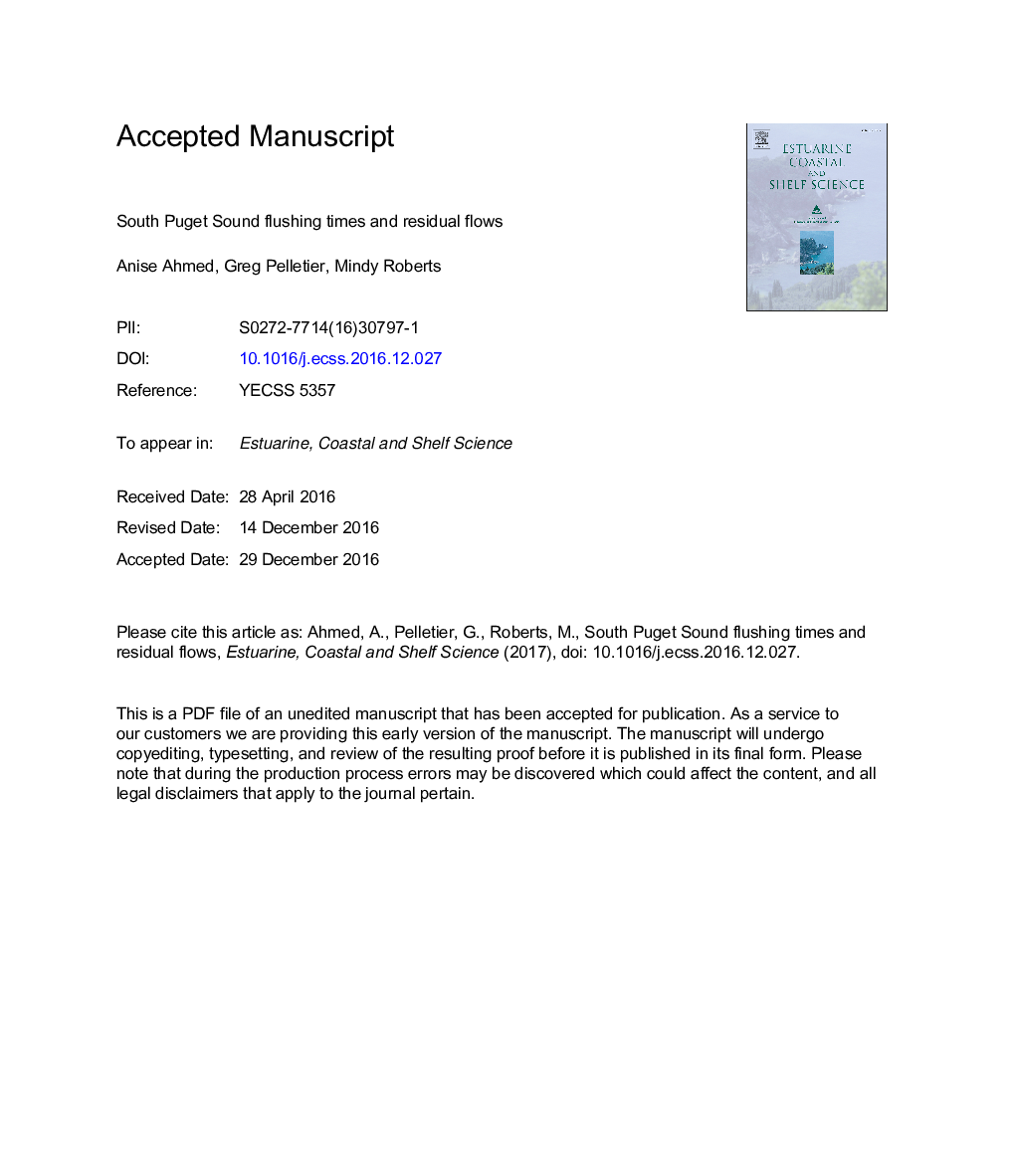| Article ID | Journal | Published Year | Pages | File Type |
|---|---|---|---|---|
| 5765244 | Estuarine, Coastal and Shelf Science | 2017 | 33 Pages |
Abstract
A three-dimensional South and Central Puget Sound hydrodynamic and water quality model was used to assess flushing times in finger inlets in South Puget Sound as well as residual flows at key transects in the model domain. The model was evaluated using instantaneous virtual dye in the inlets. Residual flows were determined at seven horizontal and vertical transects using model hydrodynamic output from 2006 to 2007 period. Flushing times based on virtual dye release for South Puget Sound was compared with that based on traditional method using residual flows and volumes. Longer flushing times in the inlets provide evidence of why low dissolved oxygen were observed in these areas from a previous study. Residual flows were comparable at several locations with literature values while at others they were lower. Possible reasons are summarized. Results provide important physical context for different regions of South Puget Sound. Flushing time for South Puget Sound (south of Tacoma Narrows) was estimated at 65 days based on virtual dye simulation. The flushing time was much shorter (34 days) when using the classical hydrodynamic formulation of volume divided by the residual flow and was close to values in existing literature.
Related Topics
Physical Sciences and Engineering
Earth and Planetary Sciences
Geology
Authors
Anise Ahmed, Greg Pelletier, Mindy Roberts,
